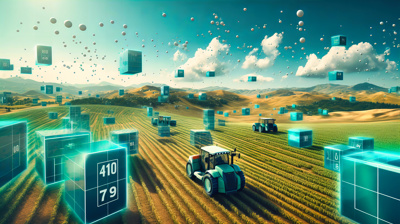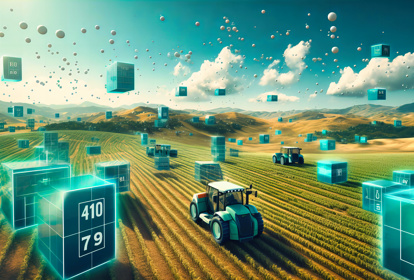
An interoperable digital platform aims to track and trace food products from farm to fork – helping to improve efficiency, productivity and transparency among food business operators (FBOs) and consumers
Increasingly, consumers want to know where their food comes from, how it’s made and even how it’s farmed.
It means there is a growing demand for transparency in food supply chains.
Innovation Case Study - Trace ConnectedHowever, tracing food data trails along such complex supply chains is currently a time-consuming process.
The food industry has become increasingly systemised over the last 20 years, but digitalisation of food traceability information has not progressed at the same pace,” says Dr Stephanie Brooks, Implementation Manager at Foods Connected, which develops software solutions for the agri-food industries.
“A lot of information is still inputted manually, which can be prone to error. Where systems are digitised, they often do not connect with each other. So, any traceability exercise involves the labour-intensive task of retrieving data from all those different systems.” Foods Connected is leading a project to create a digital platform – Trace Connected – that tracks and traces products from farm to fork. Using a centralised cryptographic ledger and Internet of Things (IoT) technologies, the platform aims to provide real-time information that enables an end-to-end trace to be extracted in seconds instead of hours.
Trace Connected is like a reservoir of information, pooling all the information from different systems into one place,” says Dr Brooks. “It means any potential compromises within a supply chain can be seen, and more informed, pro-active decisions can be made – potentially saving money and reducing waste, as a result.”
A key aim for the project was to ensure the platform was developed with the food industry in mind. “There’s no point in developing technology that is not practical to use in the real settings of farms and factories. The nature of the food industry, with its many moving parts and tight margins, meant the interoperable platform had to easily integrate with existing systems and be cost-effective,” says Dr Brooks. “The centralised cryptographic ledger, for example, has the same benefits as blockchain in terms of data integrity, but is more affordable.”
Food manufacturing project partners Hilton Foods UK and OSI Food Solutions UK acted as use cases, providing insight and data about current levels of digital maturity, how they collect and track information, and how data can be integrated into one system, which was used to inform the design of Trace Connected.
Planet IoT and Poultry Sense investigated the use of IoT technologies, in cattle and poultry sheds that record environmental and physiological parameters, such as temperature and water intakes. These metrics allow the producer to adjust An interoperable digital platform aims to track and trace food products from farm to fork – helping to improve efficiency, productivity and transparency among food business operators (FBOs) and consumers A Digitally Connected Food Supply Chain to Deliver Transparency, Sustainability & Efficiency for efficiency or productivity, and track health data to improve welfare outcomes, which is a key driver in the industry.
Trials of the prototype platform will commence in 2023 in project partner manufacturing facilities, providing live feeds of information. The project team are also exploring the potential of incorporating food-safety and quality-based data into the system, as well as exploring general obstacles to widespread adoption of interoperable traceability in the agri-food industry. Combining this extensive data capture with a tamperproof ledger could help ensure product integrity and significantly reduce the potential for food fraud throughout the supply chain.
“FBOs are increasingly making commitments about sustainability and ethical sourcing but without a connected supply chain, many of these claims are challenging to verify among the supply and customer base,” says Dr Brooks. “Trace Connected not only enables companies to make faster, evidence-based decisions to reduce waste and improve productivity but, importantly, it legitimises the honest actors. It allows good practice to be visible and recognisable.




